第71章 CHAPTER XIV THE BLUEBOTTLE: THE LAYING(4)
Let us continue our investigation, varying the conditions. A large test-tube, measuring nine inches high, is baited at the bottom with a lump of butcher's meat. It is closed with wire gauze, whose meshes, two millimeters wide, do not permit of the fly's passage.
The bluebottle comes to my apparatus, guided by scent rather than sight. She hastens to the test tube whose contents are veiled under an opaque cover with the same alacrity as to the open tube.
The invisible attracts her quite as much as the visible.
She stays a while on the lattice of the mouth, inspects it attentively; but, whether because circumstances have failed to serve me, or because the wire network inspires her with distrust, Inever saw her dab her eggs upon it for certain. As her evidence was doubtful, I had recourse to the flesh fly (Sarcophaga carnaria).
This fly is less finicky in her preparations, she has more faith in the strength of her worms, which are born ready-formed and vigorous, and easily shows me what I wish to see. She explores the trellis-work, chooses a mesh through which she inserts the tip of her abdomen and, undisturbed by my presence, emits, one after the other, a certain number of grubs, about ten or so. True, her visits will be repeated, increasing the family at a rate of which Iam ignorant.
The newborn worms, thanks to a slight viscidity, cling for a moment to the wire gauze; they swarm, wriggle, release themselves and leap into the chasm. It is a nine inch drop at least. When this is done, the mother makes off, knowing for a certainty that her offspring will shift for themselves. If they fall on the meat, well and good; if they fall elsewhere, they can reach the morsel by crawling.
This confidence in the unknown factor of the precipice, with no indication but that of smell, deserves fuller, investigation. From what height will the flesh fly dare to let her children drop? Itop the test-tube with another tube, the width of the neck of a claret bottle. The mouth is closed either with wire gauze, or with a paper cover with a slight cut in it. Altogether, the apparatus measures twenty-five inches in height. No matter: the fall is not serious for the lithe backs of the young grubs; and, in a few days, the test-tube is filled with larvae, in which it is easy to recognize the flesh fly's family by the fringed coronet that opens and shuts at the maggot's stern like the petals of a little flower.
I did not see the mother operating: I was not there at the time;but there is no doubt possible of her coming nor of the great dive taken by the family: the contents of the test-tube furnish me with a duly authenticated certificate.
I admire the leap and, to obtain one better still, I replace the tube by another, so that the apparatus now stands forty-six inches high. The column is erected at a spot frequented by flies, in a dim light. Its mouth, closed with a wire gauze cover, reaches the level of various other appliances, test-tubes and jars, which are already stocked or awaiting their colony of vermin. When the position is well known to the flies, I remove the other tubes and leave the column, lest the visitors should turn aside to easier ground.
From time to time, the bluebottle and the flesh fly perch on the trellis-work, make a short investigation and then decamp.
Throughout the summer season, for three whole months, the apparatus remains where it is, without the least result: never a worm. What is the reason? Does the stench of the meat not spread, coming from that depth? Certainly it spreads: it is unmistakable to my dulled nostrils and still more so to the nostrils of my children, whom Icall to bear witness. Then why does the flesh fly, who but now was dropping her grubs from a goodly height, refuse to let them fall from the top of a column twice as high? Does she fear lest her worms should be bruised by an excessive drop? There is nothing about her to point to anxiety aroused by the length of the shaft.
I never see her explore the tube or take its size. She stands on the trellised orifice; and there the matter ends. Can she be apprised of the depth of the chasm by the comparative faintness of the offensive odors that arise from it? Can the sense of smell measure the distance and judge whether it be acceptable or not?
Perhaps.
The fact remains that, despite the attraction of the scent, the flesh fly does not expose her worms to disproportionate falls. Can she know beforehand that, when the chrysalides break, her winged family, knocking with a sudden flight against the sides of a tall chimney, will be unable to get out? This foresight would be in agreement with the rules which order maternal instinct according to future needs.
But when the fall does not exceed a certain depth, the budding worms of the flesh fly are dropped without a qualm, as all our experiments show. This principle has a practical application which is not without its value in matters of domestic economy. It is as well that the wonders of entomology should sometimes give us a hint of commonplace utility.
The usual meat safe is a sort of large cage with a top and bottom of wood and four wire gauze sides. Hooks fixed into the top are used whereby to hang pieces which we wish to protect from the flies. Often, so as to employ the space to the best advantage, these pieces are simply laid on the floor on the cage. With these arrangements, are we sure of warding off the fly and her vermin?